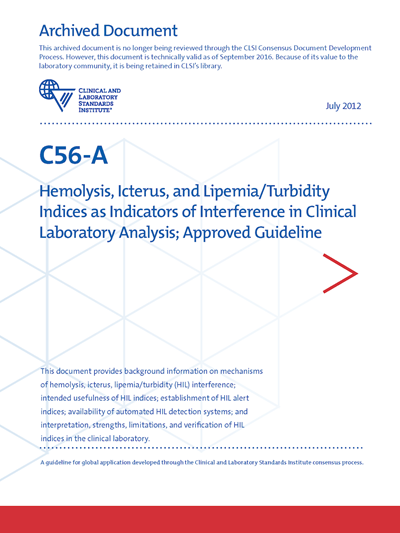CLSI C56
Hemolysis, Icterus, and Lipemia/Turbidity Indices as Indicators of Interference in Clinical Laboratory Analysis, 1st Edition
This document provides background information on mechanisms of hemolysis, icterus, lipemia/turbidity (HIL) interference; intended usefulness of HIL indices; establishment of HIL alert indices; availability of automated HIL detection systems; and interpretation, strengths, limitations, and verification of HIL indices in the clinical laboratory.
This document is available in electronic format only.
Member price:
List Price:Details
Chairholder: Merle B. Smith, MBA, MS, MT(ASCP)
Date of Publication: July 13, 2012
Order Code PDF: CLSI C56AE
ISBN Number: 1-56238-850-9
Order Code Print: print not available
Edition: First
Pages: 64
CLSI C56 Additional Details
If interested in ordering larger quantities of this document in print, please contact us here.
This archived document is no longer being reviewed through the CLSI Consensus Document Development Process. However, this document is technically valid as of September 2016. Because of its value to the laboratory community, it is being retained in CLSI’s library.

